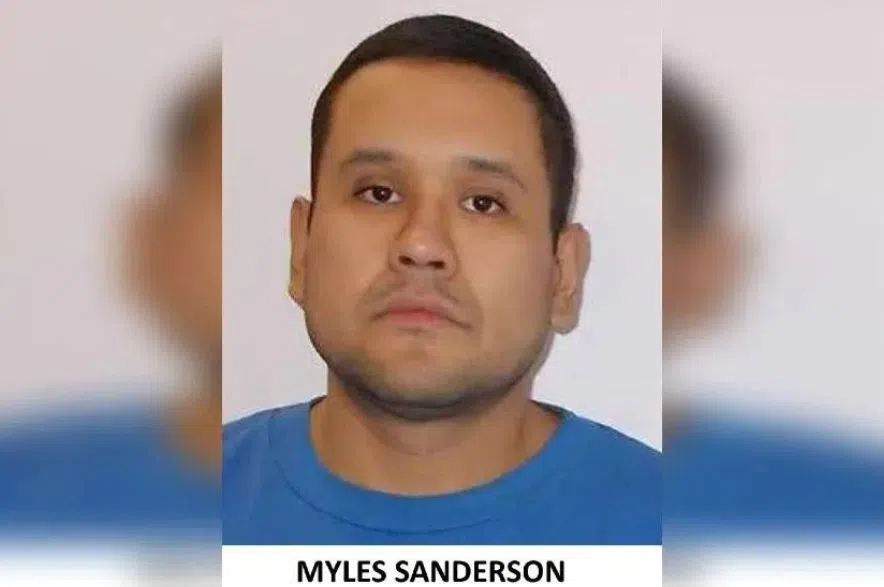A criminal investigative psychologist spoke about Myles Sanderson’s childhood trauma, substance use and possible psychological problems during the fifth day of a coroner’s inquest into the deadly stabbing rampage on James Smith Cree Nation in 2022.
Dr. Matthew Logan co-authored a report on Myles and the attacks. He talked about the abuse Myles suffered as a child and how he bounced around different homes with different families.
Myles had substance abuse issues with alcohol, meth and his drug of choice, which Logan said was cocaine. Logan said Sanderson’s criminal activities often happened when he was drunk or high.
While Logan could not diagnose Myles because they never met, he hypothesized that he likely suffered from fetal alcohol spectrum disorder (FASD), antisocial personality disorder and intermittent explosive disorder.
Logan explained that a person with antisocial personality disorder often shows a reckless disregard for themselves and others, along with impulsivity, irritability and a lack of remorse.
He said a person with intermittent explosive disorder would seem to have no ability to control their behaviour for periods, and would include behaviour like spousal abuse.
We're getting started on the fifth day, the end of the first week of the James Smith inquest pic.twitter.com/iZt8WNk8Mi
— Lisa Schick (@LMSchickler) January 19, 2024
Logan said those with FASD tend to have a low tolerance and high frustration, so it gets them in a lot of trouble.
Logan said Myles also may have shown psychopathy. He said, in his estimation, Myles scored 33 out of 40 on the PCLR, commonly called the psychopathy checklist, which would put him in the top 6 per cent in terms of his risk to re-offend violently. He explained that when you think of a person having no ability to feel empathy or remorse, along with a lack of responsibility, they’re not looking out for anyone but themselves and don’t have the controls a typical person in society has.
In his evidence given, Logan spoke about how mass casualty events are often about revenge, and the gang Terror Squad seemed to be a trigger for Myles.
READ MORE:
- Day 4: RCMP witness apologizes to veteran’s family at JSCN inquest
- James Smith residents share their concerns as inquest continues
- Day 3: RCMP witness at JSCN inquest discusses drug trade, warrants
He also discussed how recent tensions ahead of the killings, like the attack on Vanessa, would be considered an acute trigger that could have set off intense anger that maybe took Sanderson down the road he went — though Logan was quick to say there is no blame set on the victim of that violence.
How did Myles choose his victims?
The other half of Logan’s report was led by Staff Sergeant Carl Sesely, who leads the Ottawa-based profiling and threat assessment unit of the RCMP.
Sesely tried to get into Myles’ head and figure out why he chose his victims.
He said there were people Myles came across during his rampage that he didn’t hurt, which Sesely said showed that he was thinking, and wasn’t interested in just “increasing the body count.”
The report put the victims into four categories. The first was primary grievance, the people who Myles had a grievance with directly. In some cases, Sesely said, Myles thought the person had an association with the Terror Squad gang or they were associated with someone he didn’t like.
The second category was secondary grievance, which Sesely explained were people who were associated with those Myles had a primary grievance with.
There were some whom Sesely believed Myles had a primary grievance with, but investigators couldn’t figure out what it was.
Finally, there were people dubbed reactive victims. In short, they were the people who Myles felt got in his way.
Sesely went through every person and every interaction Myles had and explained which category RCMP decided they belonged to and why.
The staff sergeant added that Myles, when he was caught, wasn’t done with his “mission.” He said Myles had stopped at another first nation and tried to get a vehicle from someone who recognized him. Sesely said that likely meant Myles wanted to get out of the vehicle police knew him to be in and keep going.
Sesely said he believes Myles was trying to get to Saskatoon in order to harm his spouse, Vanessa Burns.
Emergency alerts
Earlier on Friday, Mandy Maier with Saskatchewan RCMP strategic communications spoke about the emergency alerts that blasted on every cell phone in the province during the attacks.
She said the RCMP sent a dozen alerts between Sept. 4 and 7, including the initial advisory, updates and cancellations. She admitted the wrong photo of Myles was sent initially, but it was corrected within an hour.
The lawyer for the JSCN grilled Maier on the incorrect picture, asking whether police went to the first nation to confirm the identity of the person in the picture. Maier said they didn’t, defending the move by saying time was of the essence in sending out emergency alerts. Maier said the incident will inform future RCMP training.
From this point forward in the inquest, jurors can expect to hear from pathologists and forensics, and are expected to learn some of the more minute details that aim to support and confirm the timeline set out by police.
–with files from Lisa Schick











